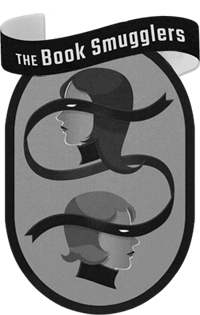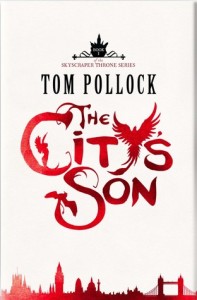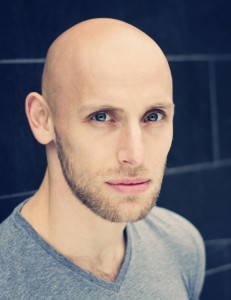We are most delighted to welcome Tom Pollock to the blog for the first time. Author of the excellent Urban Fantasy novel The City’s Son – the first book in The Skyscraper Throne trilogy – Tom is here today to talk about UF, Cities and Myth.
Please give it up for Tom!
“Cities, like dreams, are made of desires and fears.” – Italo Calvino, Invisible Cities.
Urban fantasy is a term that gets bandied around a lot, but for me the heart of it rests in a simple proposition: The city around you is a stranger, and wilder place than you know. Urban fantasies are the myths we tell ourselves about the places we live in.
There’s a long and honourable tradition of enchanting our environments. In ancient Greek myth, every stream and tree stump had its nyad or dryad, its spirit to be appeased, romanced or fought. In the stories we once told each other, every day was a negotiation with the land.
Part of this, sure, was early science: a way for our predecessors to explain the world before microscopes and periodic tables and Large Hadron Colliders came along. Myths were a way to fill the gap between what they saw and what they knew. But it goes deeper than that. By giving this river or that mountain a face and a will, by making it something they could respect and fear and talk to, they also made it something they could love. Not in the abstract way you love a pretty picture, but with the fierce passion you reserve for people – for beings with a soul.
Now billions of us live in cities, more than half of the human race. You might think that these products of humane engineering wouldn’t support the same kind of storytelling. We created them; surely we should be their masters and know their secrets? But speaking for myself, the urge for an emotional connection to physical space is as strong as ever.
In a way, cities are more fertile breeding grounds for myths than anywhere else we’ve ever lived. Cities and myths have a lot in common: both are shared artefacts evolved over centuries, handed down through generations, shaped by the actions of thousands of people, and shaping their lives in turn. In cities, the sheer density of population allows all kinds of human lives to collide and (as with the aforementioned LHC) in these collisions we find stories.
Cities are full of derelicts and compressed lives and hidden zones, rife with within-arms-length mysteries, and things only half understood. They’re crammed with technology, from streetlamps and traffic lights to iphones, that only a tiny percentage of the population grasp the workings of. Urban architecture keeps secrets too; walls and shuttered windows rise on all sides. We’re surrounded by spaces where anything could be happening, where we’re free to speculate. And then we have the names. Cities are more densely packed with names than any other space has ever been. Every street, neighbourhood and pub has one, and a name is to a story what a buried fragment of pottery is to an ancient civilisation: evidence of it, a piece of it, and key to begin constructing the whole of it. The gap between the observed and the known is as wide as it’s ever been. And urban fantasy writers fill those gaps with myth.
In Neverwhere, Neil Gaiman makes use of London’s names. The Angel Islington being named for an actual angel. In Rivers of London, Ben Aaronnovitch speculates that the bland house fronts of suburbia conceal nests of sleeping vampires. In my own The City’s Son, I riff off urban technology – Railwraiths stampede across tracks while white-noise spiders pick their way over the telephone wires, tasting the air for the voices of the lonely.
The way these stories blend with the brick and concrete around us makes them feel both plausible and unsettling. They’re unheimlich “the opposite of what is homely”. They alienate you from what you think you know. Their heroes and monsters could be your neighbours, they could be waiting for you on your doorstep; you just have to lift the latch.
Above all, these stories are an invitation. Come walk stranger streets.
Read more about Tom on his website and follow him on Twitter . And you can read Ana’s review of The City’s Son HERE.














4 Comments
Book Review: The City’s Son by Tom Pollock | The Book Smugglers
September 4, 2012 at 3:58 am[…] Guest Author: Tom Pollock on Urban Fantasy, Cities and Myth […]
Ashley Prince
September 4, 2012 at 5:45 amI am a huge fan of UF and Tom’s book is brilliant. Absolutely brilliant and one of a kind.
“But speaking for myself, the urge for an emotional connection to physical space is as strong as ever.” I completely agree with this.
Nikki Egerton
September 5, 2012 at 4:32 amThis is a fantastic post. It inspires me 🙂
Pet Shop Aliens | Literary Escapism
September 11, 2012 at 9:20 am[…] Amberkatze ReviewsTom Pollock, author of The City’s Son – All Things Urban Fantasy, The Book SmugglersViolet Jordan, author of Claws and Effect – Supernatural UndergroundThere are always more […]